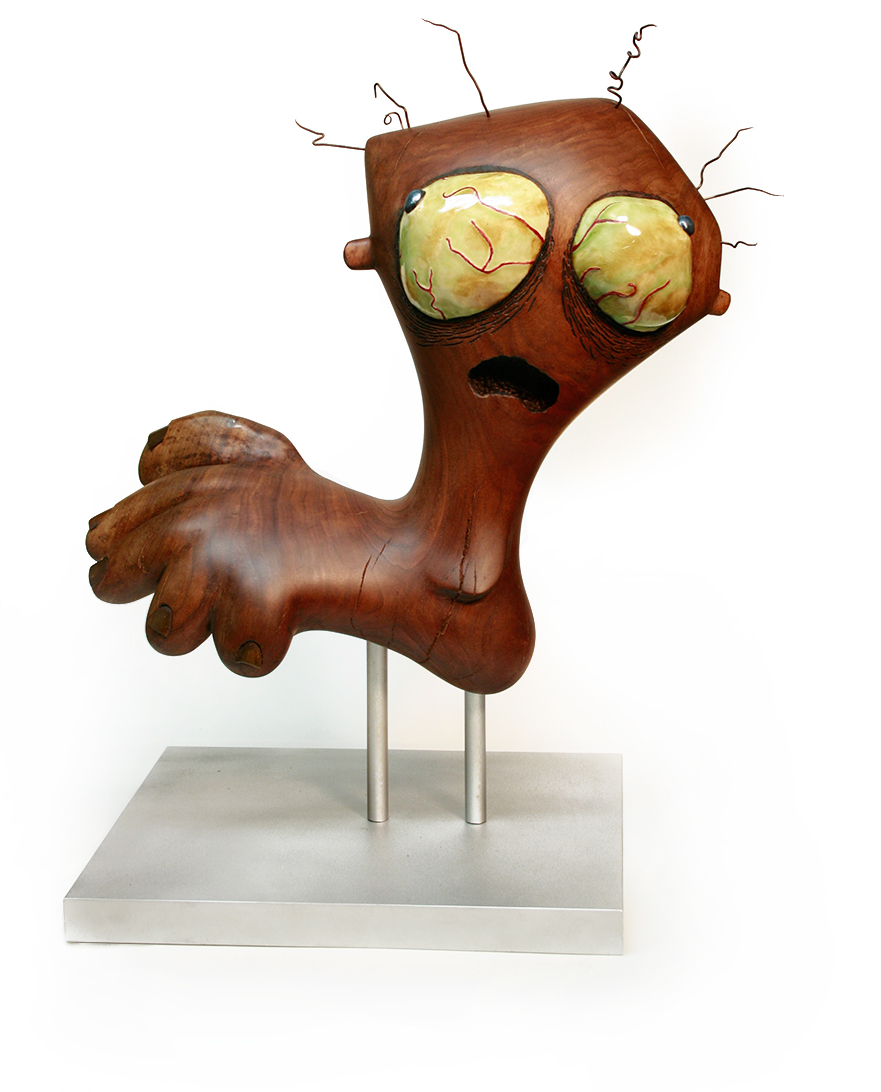Sculpture
Conceptual:
Castings:
Bronze Skull
Bronze Ram Horn
Irish:
Claddagh Planter
Cast Bronze, Whiskey Barrel Planter
The Claddagh ring belongs to a group of European finger rings called “fede rings”. The name “fede” derives from the Italian phrase mani in fede (“hands [joined] in faith” or “hands [joined] in loyalty”).
These rings date from Roman times, when the gesture of clasped hands was a symbol of pledging vows, and they were used as engagement/wedding rings in medieval and Renaissance Europe.
Fede rings are cast in the form of two clasped hands, symbolising faith, trust, or “plighted troth”. The Claddagh ring is a variation on the fede ring, while the hands, heart, and crown motif was used in England in the early 18th century.
Towards the end of the 20th century there was an explosion of interest in the Claddagh Ring, both as jewellery and as an icon of Irishness that now adorns many other objects from pub signs to grave stones. In more recent years it has been embellished with interlace designs and combined with other Celtic and Irish symbols, but this is a very recent phenomenon that corresponds with the worldwide expansion in popularity of the Claddagh ring as an emblem of Irish identity. wikipedia.org
Celtic Cross
Cast Bronze
The Celtic Trinity Knot, or the Triquetra, is one of the most common of the knot ilk. The term Triquetra comes from Latin, and it means “three-cornered.” There are many schools of thought when discussing the Celtic trinity knot meaning.
All of the various interpretations agree on a culmination of thee parts.For example, early Christian understanding views the symbols as the Father, Son and Holy Spirit.
Whereas, a more pagan school of thought sees the trinity knot as the drawing of the three inherent feminine powers: Mother, Crone, and Maiden.
Still another understanding can be found in a more metaphysical arena where the three corners represent mind, body and spirit. whats-your-sign.com
Leprechaun
Cast Bronze
The earliest known reference to the leprechaun appears in the medieval tale known as the Echtra Fergus mac Léti (Adventure of Fergus son of Léti). The text contains an episode in which Fergus mac Léti, King of Ulster, falls asleep on the beach and wakes to find himself being dragged into the sea by three lúchorpáin. He captures his abductors, who grant him three wishes in exchange for release.
The leprechaun is said to be a solitary creature, whose principal occupation is making and mending shoes, and who enjoys practical jokes. According to William Butler Yeats, the great wealth of these fairies comes from the “treasure-crocks, buried of old in war-time”, which they have uncovered and appropriated. According to David Russell McAnally the leprechaun is the son of an “evil spirit” and a “degenerate fairy” and is “not wholly good nor wholly evil”. wikipedia.org




















